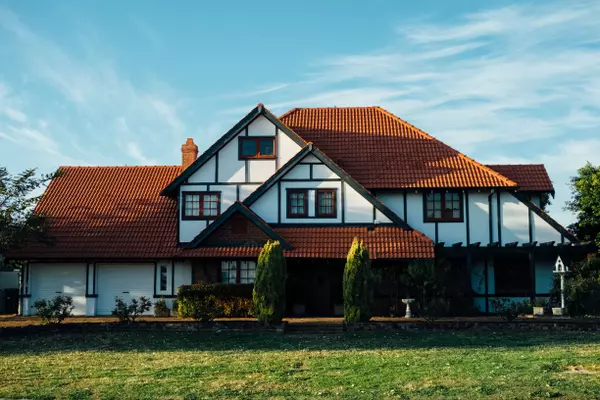Garden Mastery: Carl and Joy Herzog are seeding a legacy through plumeria seedlings
By Kim Schultz
For The Union-Tribune
When an ornamental horticulture professor at Cuyamaca College asked him to draft a design for a plant nursery, Carl Herzog looked at the bare, decomposed granite hillside beside his Lakeside house and planted 40 plumeria seedlings to create an actual nursery.
“I passed,” he recalls with wry humor 30 years later, surveying the mature forest of thickly planted plumeria trees.
Forty plumeria seedlings isn’t something the average person has sitting around, but Carl is not the average person.

Carl and his wife Joy discovered the beauty of plumeria on a trip to Hawaii in 1984.
“What’s that flower?” they asked a gardener, who cut the branch off the tree and told them to go home and plant it. Plumeria are small ornamental trees known for their scented, five-petaled flowers in colors including white, yellow, red, pink and orange that originated in the deserts of Central and South America. Today, plumeria are cultivated around the world — and some of the best varieties were created by Carl and Joy Herzog.
New varieties of plumeria come from seeds, since plumeria seeds are not true to the parent plant. Plumeria are typically self-pollinated (wind and sphinx moths help), where a flower gives way to a two-horned seed pod. The pod will grow and darken over nine to 10 months, eventually splitting when the seeds are mature. No seedling developer based in Southern California has been more prolific than the Herzogs.

Starting plumeria seeds can yield new and exciting varieties, but also bland white and pink blooms. The Herzogs were introduced to plumeria seeds in the mid-1990s by Henry Dupree. Since then, they’ve grown hundreds of seedlings, and they’ve deemed 36 varieties worthy of naming and propagating. This puts them among the most notable U.S.-based plumeria seedling developers. On Kauai, the late Bill Moragne grew 283 seedlings and designated 35 as the Moragne seedlings; in Texas, the late Elizabeth Thornton and her family grew 700 seedlings and named 40. Jim Little and his family of Oahu’s Little Plumeria Farms have more than 94 named varieties and, like the Herzogs, is still developing plumeria. Some of the best of the Herzog varieties are ‘Joy,’ ‘Blaze,’ and ‘Autumn Sunrise.’
In 1999, the Herzogs joined with Henry Dupree and others to found what would become one of the largest plumeria societies in the world, the San Diego-based Southern California Plumeria Society, and from February through October, Joy and Carl still attend meetings and talk about plumeria with hundreds of others, sharing their experience and enthusiasm.
“The thrill of seeing new flowers coming out,” Carl said, “every day is an adventure to see what the new seedlings look like, both good and bad.”

To grow plumeria from seeds, Carl and Joy recommend getting seeds with known parentage. Pick more colorful parent plants over whites and pale yellows. The Herzogs have had great success with seeds from ‘Makanani,’ ‘Bud’s California Sally,’ Jim Little’s ‘Pink Pansy’ and their own ‘Autumn Sunrise.’
Start seeds in spring. Take a small container, such as a six-pack for annuals, and fill it with potting mix, coir or pumice. Plant plumeria seeds in the potting medium with the fatter end down and keep the growing medium moist. Place them somewhere warm with indirect sun. As soon as the plant emerges and looks like a hearty plant, repot it into a bigger pot, and acclimate it to full sun. Mark the plants with their parentage, the date started, and the source of the seeds. Keep them well-watered and fertilized with a balanced fertilizer; increase the pot size as the plant grows. Unlike plumeria plants started from cuttings, plumeria seedlings won’t go dormant their first year.
But be patient: Plumeria seedlings take, on average, three to five years to first bloom, and some may never bloom. The Herzogs have varieties that are 15 years old that haven’t yet bloomed. First blooms are notoriously fickle; the Plumeria Society of America requires a seedling to be in its third blooming cycle before it is eligible for registration.

Once the seedling becomes a full-size plant, propagate it by taking a cutting from the mother plant during the active growing season. Allow that cutting to form a callus, then plant the cutting in well-draining soil in a warm location out of direct sun. Once leaves have pushed out of the tips of branches, begin watering the plant and acclimate it to a full-sun location. Water only when the soil has mostly dried out. Watch for spider mites, whitefly and leafhoppers. At the end of the growing season, between October and November when nighttime temperatures drop to 50 degrees or lower, stop watering and protect the plants from frosts and freezes.
Helpful links
• For questions on plumeria or any home gardening topic, contact the UC Master Gardeners of San Diego County Hotline at (858) 822-6910 or by email at help@mastergardenerssandiego.org.
• Visit the Southern California Plumeria Society’s website at southerncaliforniaplumeriasociety.com for plumeria help, or attend their annual Plumeria Festival, this year on Sept. 6 and 7 from 10 a.m. to 4 p.m. in the Casa del Prado in Balboa Park.
• Read an article by Carl Herzog on seed starting with more details here: plumeria.care/seeds-seedlings/growing-plumeria-from-seeds.
Schultz is a Master Gardener and a past president of the Southern California Plumeria Society. She co-chairs the annual SCPS Flower Show and loves teaching workshops on plumeria.
Categories
Recent Posts










GET MORE INFORMATION


